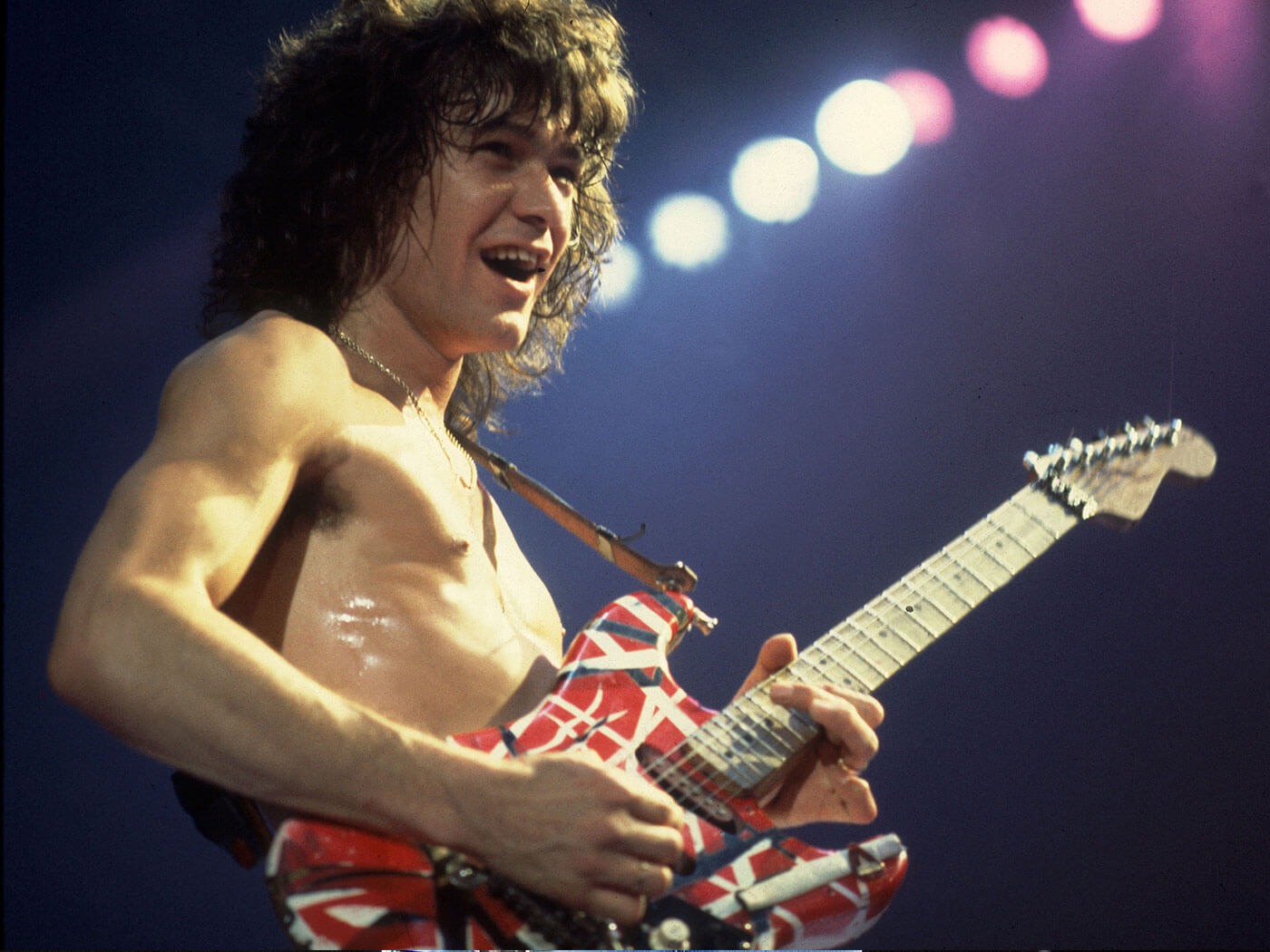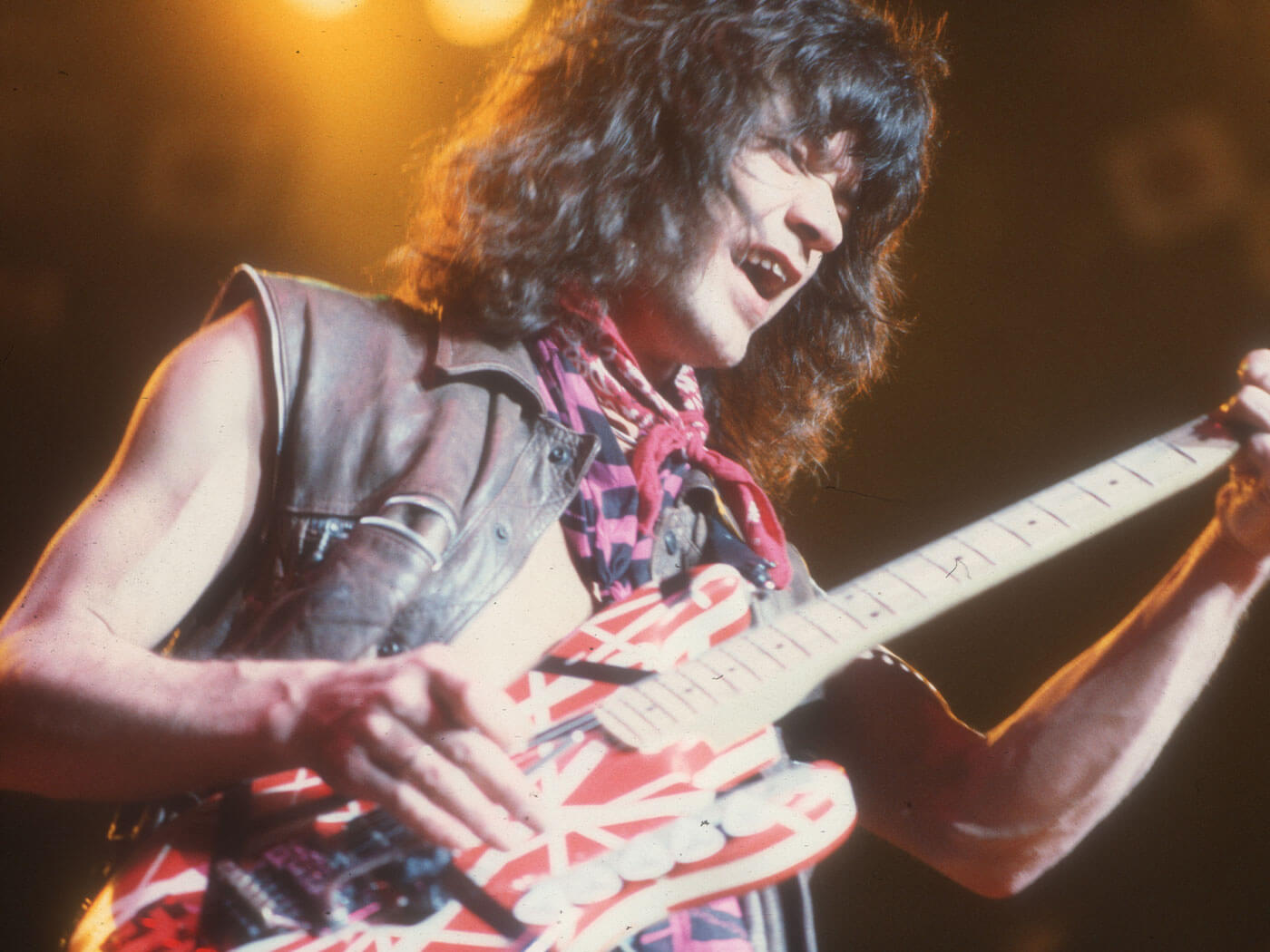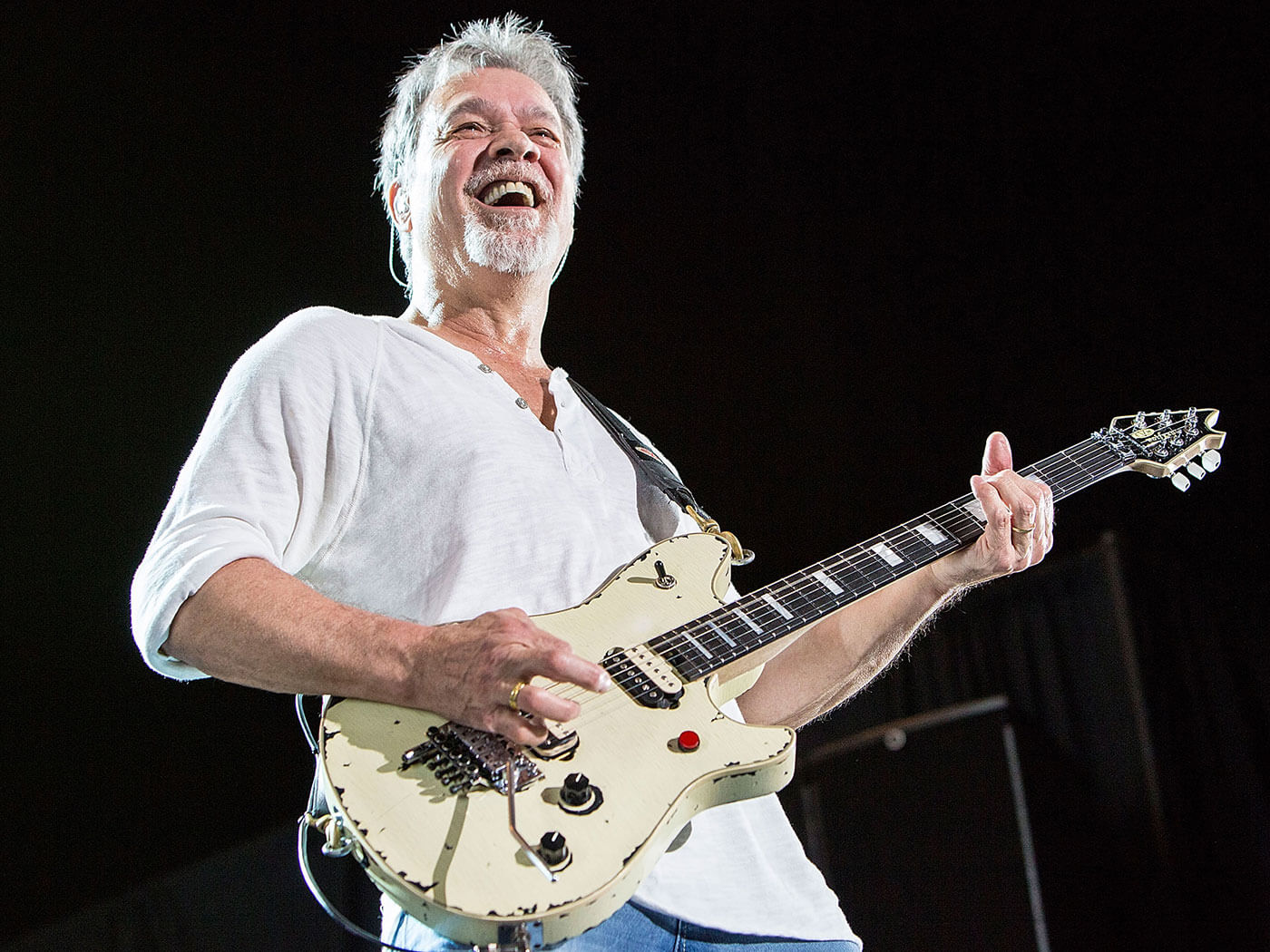Eddie Van Halen: he came, he saw, he reinvented electric guitar playing
The guitarist, who died 6 October aged 65, leaves a legacy of unrestrained guitar innovation that has inspired and enthralled generations.

Image: Paul Natkin / Getty
In the modern world, it’s inevitable everything is reduced to bits and bytes. Hence we’ve seen mainstream media reduce the late Edward Van Halen’s legacy to Jump and Beat It. With occasionally a bit of Eruption, if you’re lucky. All rock landmarks, of course, but a partial snapshot. Eddie deserves better. So let’s try…
It could have been very different, and he may have never picked up a guitar. Alongside older brother Alex, Edward Lodewijk Van Halen took piano lessons as a child, alongside his parents moving the VH family from homeland Holland to California, USA. “We came here with approximately $50 and a piano, and we didn’t speak the language. Now look where we are!” he later marvelled.
The starting pistol went pow when the brothers heard The Dave Clark Five’s Glad All Over and The Surfaris’ Wipe Out. Rock ’n’ roll! The piano was binned, and with new instruments, young Edward was to be the drummer, Alex the guitarist. Eddie was busy delivering newspapers (to pay for his drumkit) when Alex sneaked on the throne. Long story, but the brothers eventually agreed to swap instruments. Good call: they both became incredible. And Eddie quickly became obsessed with six strings. He’d devote hours and hours in his teenage bedroom to practising guitar. Jimmy Page and Eric Clapton were his idols. But he also heard other things in his head…
After bar-band apprenticeship (under the name Mammoth), the band Van Halen legendarily scored a demo session with Gene Simmons. Kiss’s self-styled ‘God Of Thunder’ wanted to change the band’s name to Daddy Longlegs, but they refused. Simmons bowed out of any further involvement after his own Kiss management said Van Halen “had no chance of making it.” Yep, it could have been very different…
By the time the determined Van Halen had debuted with a full LP of sparkling rock, that insistence of sticking to their name proved justified. Not since Eric Clapton in the 60s had a band received so much focus on the guitar player: and he didn’t even sing, except the odd chorus backup. Band and brand were nevertheless in harmony.
The shreddingly-tapped Eruption got all the WTFs, but there was much more than that. Runnin’ With The Devil boasted a swaggering, sleazy riff-off with a melodic solo that exploded like fireworks. Ain’t Talkin’ ‘Bout Love is gold both heavy and weightless, a riff of concrete and another solo that soars with melody.

Van Halen II repeated the new heavy blueprint. For Eruption, it was now Spanish Fly – bamboozling two-handedness on a nylon-string. Maybe just to show this was no accident. It’s been written many a time that Van Halen helped “kill disco”, but that’s barely true anyway. Early Van Halen is a dumb, big, grinning glitterball. Huge fun. And you can dance. It’s a metal disco! With guitars as lasers.
When times were good between the Van Halens, perma-yelping David Lee Roth and bassist Michael Anthony, the hits just kept a-rollin’. Every release had something that would see 80s guitar players’ jaws hit the floor. The goofy speed-metal riffology of Loss Of Control, the phase-pedal-as-instrument on The Cradle Will Rock (both from Women And Children First). The darkness of the whole Fair Warning album, with bomb-riff Unchained or the flanging funk figures of When Push Comes To Shove. The volume-knob-as-pick of Cathedral, the insane staccato picking of Little Guitars (both Diver Down.) The list is long. It’s become a cliché to say: Eddie Van Halen’s rhythm guitar playing outshone his solos. You know what? Eddie Van Halen’s rhythm guitar playing did outshine his solos. His palette of colours was way beyond ‘metal’, an impish grin and a tapped solo. Crowd pleasers though those moves inevitably were.
Others soon picked up the baton: it’s perhaps unfortunate that Van Halen inspired a slew of by-rote 80s hair metal (unnamed to protect the guilty), but Eddie himself was undoubtedly the most influential guitarist of that decade. ‘GOAT’ arguments remain pretty pointless, but there were serious debates in the 80s about who was ‘better’: Jimi or Eddie? Hendrix won… by virtue of being first through the door.
When David Lee Roth left, Van Halen (the band) arguably became more workmanlike with Sammy Hagar but that didn’t stop commercial success. Eddie could still deliver indelible songs, and from 5150 (1986) to Balance (1995) ‘Van Hagar’ scored back-to-back US No 1 albums.
And, all the while, Ed remained devoted to the simplistic wood, wire and metal bits that make up an electric guitar. He had thousands of players aping his own “brown sound” tones. He described his own modded and self-designed instruments as the pursuit of a “Formula 1 racing car.” In time, signature guitars, amps and pedals would all bear his name. As would a whole manufacturing company. Ignoring the fact that his original ‘Frankenstrat’ was a $130 Charvel factory second body and neck, with a Gibson PAF pickup that was wax-potted at home by EVH himself.

The commercialisation of the EVH ‘brand’ was perhaps pointless, as an official Van Halen guitar will never get you in the head of Edward Van Halen. Which was clearly a strange place to be. He wasn’t a craftsman in the traditional sense. He could never read music, he never ‘studied’, and rarely talked about other artists inspiring him. He was a true maverick, in his own world – a savant who intrinsically understood how he could play guitar with uniqueness, but a human being who struggled with more mundane aspects of life.
It’s sad to see Eddie Van Halen go so relatively young, as he could have probably played anything on a guitar. His own father, Jan, was a jazz musician and Diver Down’s Big Bad Bill (Is Sweet William Now) was a throwaway hoot: Ed comp-chording an old Gibson jazzbox beside Papa VH on a clarinet. Eddie could surely have made a ‘jazz guitar’ album with ease, off the cuff. It would probably have ‘reinvented jazz’. But he mostly stuck with a heavy rock template by his own choice.
EVH’s most fervent fans called him “the Mozart of electric guitar.” Which sounds lofty, but Wolfgang Amadeus Mozart himself said, “I pay no attention whatever to anybody’s praise or blame. I simply follow my own feelings.” Words which suit the late, great Edward Van Halen to a tee.
